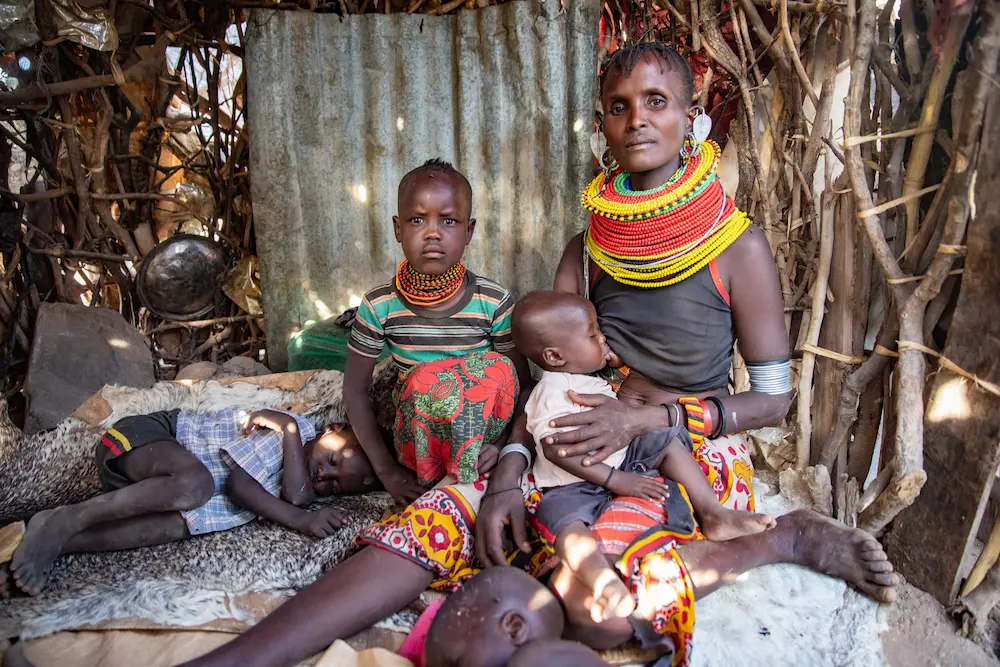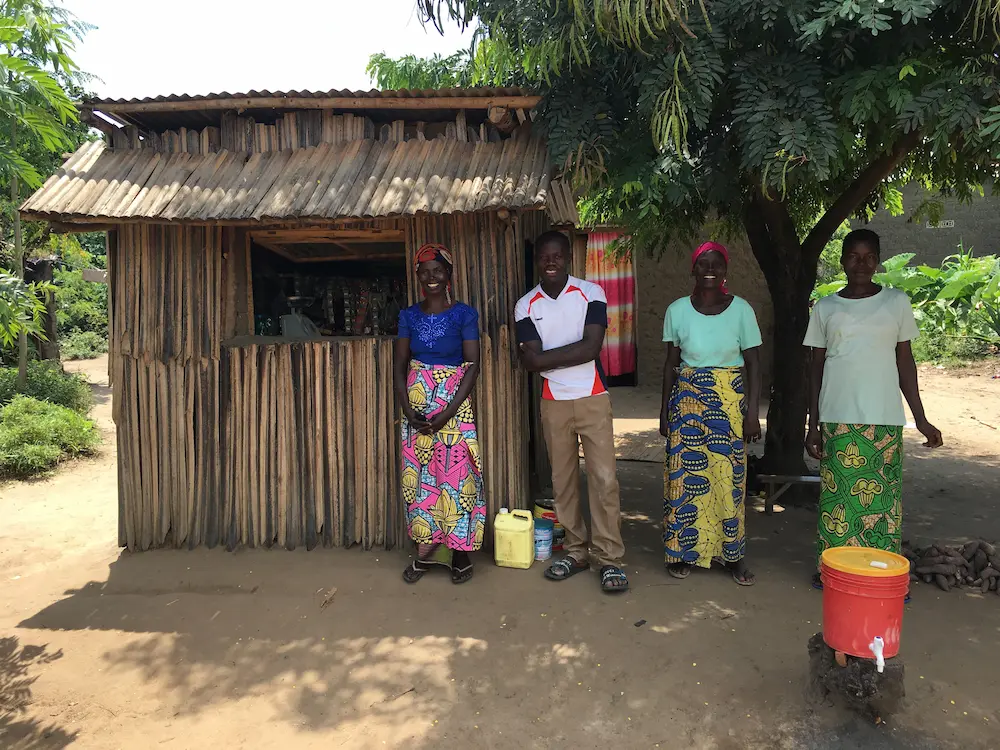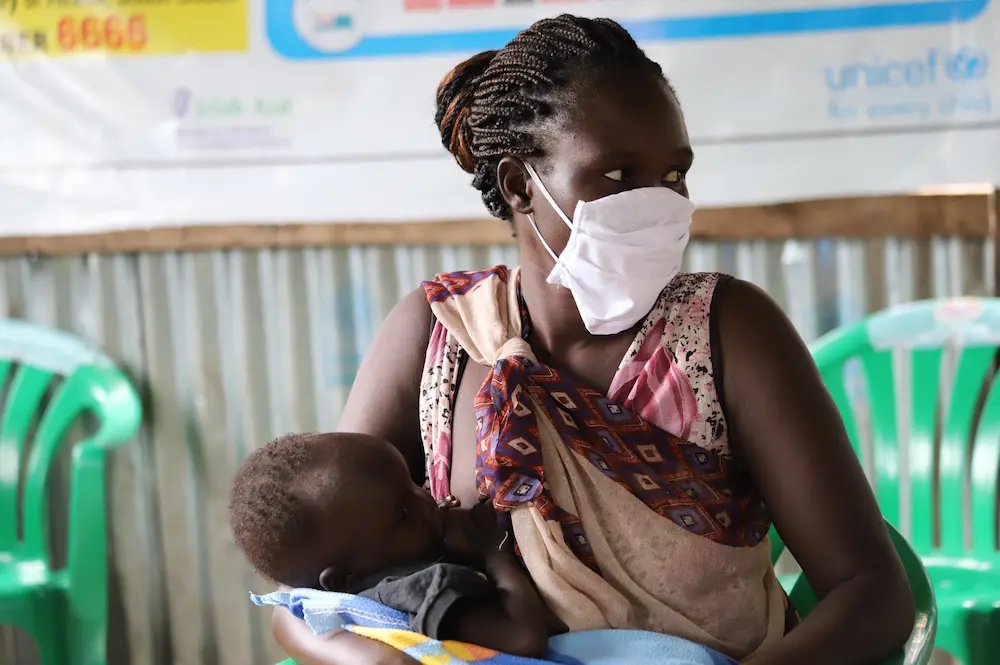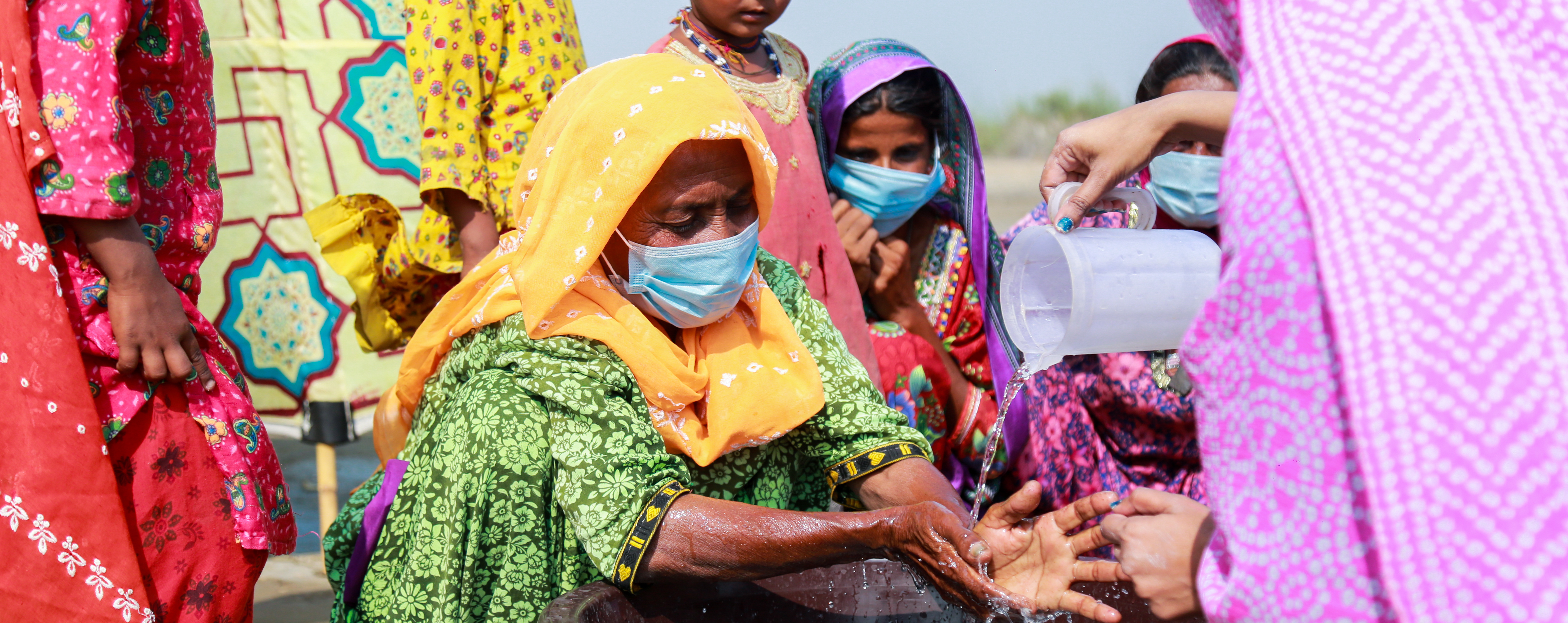In 2020, we wrote that "Urgent action is needed to protect the world’s most fragile populations from both the COVID-19 pandemic and the ways it will impact the causes of poverty." Two years later, here's how that prediction has fared — and why we need to care about COVID-19's threat to ending poverty more now than ever before.
Concern Worldwide is tasked with protecting the most vulnerable communities, ensuring no one is left behind. Since 2020, the international community has grappled with a global crisis — one that required a truly global response. Nonetheless, some of our worst fears about COVID-19 and poverty have come to pass. Here's what we know in 2022, and what needs to happen next.
1. COVID spares no one, even in countries where case numbers are low
The secondary impacts of the COVID-19 pandemic affect everyone — even those in countries reporting low case numbers. As North American and European countries saw a dramatic spread of COVID-19 infections throughout 2020 and into 2021, an ongoing narrative was that low income countries have been “spared” from the pandemic.
Yet, despite few COVID cases reported, extremely poor people have continued to suffer in terms of their access to livelihoods, healthcare, and education during the pandemic. Last year, Concern surveyed over 6,000 people across ten of the countries where we work — many of which, at the time, had only a few hundred cases per 1 million people. Of those surveyed, 66% said that their income had been negatively affected by the pandemic. In many cases, this directly translated to an inability to eat: 50% of respondents reported that their families were eating less than they had been pre-COVID. 79% of survey respondents also said they feared further financial strain in the coming months.
A larger survey conducted by Concern along with its Alliance2015 partners also revealed that 75% of over 16,000 respondents reported a change in their incomes implemented to control the spread of COVID-19. For 92%, the change had been negative.

2. We've lost at least three years' worth of work in ending poverty to the pandemic
The World Bank estimates that we've lost three to four years of work towards ending global poverty to COVID, with approximately 97 million additional people living in the cycle of poverty due to the pandemic. More than half of these 97 million live in sub-Saharan Africa, in countries with preexisting humanitarian crises. Nearly 50 years of ongoing crisis in the Democratic Republic of Congo — including ongoing conflict and (more recently) the second-largest Ebola outbreak in history — have been exacerbated by the impact of the pandemic. In Kenya, Somalia, and Ethiopia, the worst drought in over 40 years has become even more dire due to the last two years of lockdown-related economic losses.
However, the effects of COVID-19 on poverty aren't felt only in this part of the world. Haiti — the poorest country in the western hemisphere — faced an escalation in its own humanitarian crisis in 2021, including political upheaval and a major earthquake. The complexities of the pandemic only added further complications to humanitarian aid efforts. In West Africa, an estimated 25 million additional people were unable to meet their basic needs in 2021, a 35% increase compared to 2020.
3. Pandemics hit hardest on those who are the furthest behind
One of the main causes of poverty is inequality combined with risk. Catastrophic events like a pandemic only serve to widen that gap.

Even countries with healthy economies and well-resourced systems have struggled to stay ahead of the virus. As we saw in the United States, neighborhoods with the highest rates of COVID-19 cases and fatalities have also been neighborhoods with lower incomes or marginalized communities. Many of those who could not socially distance were those who worked in grocery stores, hospitals, and public transportation — roles that kept them interacting with a large number of people.
Approximately 71 million people living in poverty in urban areas and displacement communities have been unable to practice social distancing. For most, access to basic health services or personal protective equipment has and continues to be a pipe dream. Precautions like regular handwashing with soap is an unaffordable and non-existent luxury. Urgent action has been needed to protect the world’s most fragile populations from the effects of COVID-19 on poverty. That action, however, has been hindered by poor funding and a lack of commitment from the international community.

4. World hunger levels have more than doubled since COVID
At the end of 2019, 135 million people went to bed hungry each night. At the beginning of 2020, the World Food Program estimated that another 130 million would also face hunger, its chief economist Arif Husain telling the New York Times, “We’ve never seen anything like this before. It wasn’t a pretty picture to begin with, but this makes it truly unprecedented and uncharted territory.”
However, that estimate — while dire — was optimistic compared to the reality we're in in 2022, with over 345 million people facing hunger. The pandemic affected global food systems, supply chains, and purchasing practices. Stockpiling and a growing demand for food items created a strain on global supply chains, while restrictions on trade and movement had a domino effect on food security — with impacts including an increase in food prices and lower agricultural outputs due to social distancing.

5. Other health services have been hindered by the pandemic
A country with nearly 70% of its population living below the poverty line, Somalia had, at the beginning of 2020, just 15 ICU beds for its 15 million residents. In the vast Rohingya refugee camp in Cox’s Bazar, Bangladesh, the threat of COVID-19 came on top of concurrent outbreaks of cholera, chicken pox, and diphtheria — as well as over 174,000 pre-existing respiratory infections.
Healthcare has been increasingly difficult to access since the coronavirus. Even if the mortality rates are kept low for an outbreak of the novel coronavirus in one community, this may come at the expense of other health priorities. This goes for both healthcare systems and for patients seeking help: Nearly one third (32%) of Concern survey respondents said that they or someone in their household had to postpone or forego medical treatment during the pandemic, but this percentage was as high as 51% in Somalia and 72% in Afghanistan. Despite the low number of reported cases in these countries, the most common reason for avoiding healthcare across the board was fear of contracting the virus.
COVID-19 has also overwhelmed the healthcare sector and diverted valuable healthcare resources away from ongoing campaigns. In particular, the suspension of vaccination campaigns and other key healthcare services early in the pandemic put hundreds of thousands at risk for preventable diseases such as polio and measles. Ongoing vaccine inequities have left many countries behind on administering COVID vaccinations to their communities. Further compounding the situation, the prices of hundreds of essential drugs and medicines have risen during the pandemic, leaving many unable to afford the treatments they need. Continued support is needed from governments and the international community to ensure that urgent healthcare needs can be met despite these challenges.
6. The pandemic has widened the gender equity gap
Gender disparity is the most common form of inequality around the world and a central barrier to ending poverty globally. As nurses and community volunteers, women make up the majority of front-line healthcare workers, often risking their own safety and health to ensure the safety and health of others. Even in crisis times, women also still serve as the primary caregivers at home for their children and elder family members, and will continue to do that work even if they’re responding to a health emergency.
Despite all of this, women are most frequently left out of the conversations that decide how communities are managed. This is especially precarious in an outbreak, when access to information (even about treatment or prevention) can be severely constrained. Previous epidemics have shown us just how gendered outbreaks can be, and how a pandemic can widen the gender gap, and the impact of COVID-19 on women and girls has been no different.
7. COVID and conflict go hand-in-hand to increase vulnerability
As Concern’s Humanitarian Policy Advisor Dom Hunt recently wrote, a rise in conflict resulting from the economic and political impacts of COVID-19 is highly likely. On March 24, 2020, the UN Secretary General called for an immediate global ceasefire in all corners of the world, stating that “It is time to put armed conflict on lockdown and focus together on the true fight of our lives.”
In countries which are already dealing with conflict, the long term impacts of previous conflict, or countries with a high potential for conflict, the government’s ability to manage public health crises may already be compromised. The disproportionate impact of COVID-19 on the urban poor in contexts already affected by conflict could exacerbate existing tensions. The risk of violence is high in countries where the economy was already floundering, with high unemployment, frustration at government performance, and pressures created by conflict in neighboring countries.
8. COVID lockdowns kept children out of school; some may never go back
In an effort to contain the spread of the virus, many governments and localities made the decision to close schools. Because people living in fragile and conflict-affected areas are unlikely to have access to the technology needed for remote learning, school closures present significant obstacles to education.
A small number of Concern survey respondents indicated that their children could access remote education through means such as radio (6%), the internet (4%), and educational television (6%). However, the vast majority were left with little recourse. Aside from providing education, schools are often an important source of food for low-income families. In many cases, their closure translates to one less meal for children during the day.
It remains critical to provide political support and funding so that children can access adequate food and quality education while schools are closed. With children at home and many adults out of work while financial strain and psychosocial stress increase, the risk for violence at home is elevated. 37% of respondents indicated their belief that people are arguing more with their families since the COVID-19 pandemic began. This corresponds with other evidence that suggests that gender-based violence was on the rise as people spent more time indoors.
COVID-19 and Poverty: Concern’s Response
The COVID-19 pandemic is poised to have a catastrophic impact on the world’s poorest communities and hinder many of the solutions to poverty underway in those communities. Drawing on our experience helping to control outbreaks like Ebola, we trained and equipped teams across 24 countries to respond, and seeking to provide the most vulnerable communities with the resources they need to survive. This has included:
- Providing personal protective equipment (PPE) to health workers
- Creating handwashing stations, distributing hygiene supplies, and providing other sanitation services to help prevent the spread
- Ensuring communities get accurate and life-saving health information through print, radio, and text message campaigns
- Supporting and training health facility staff
- Providing cash transfers and livelihood and education support
We’re able to respond with such quickness and agility because of your committed support. It is the essential resource of our work. You can empower even more work by donating to our COVID-19 response.


